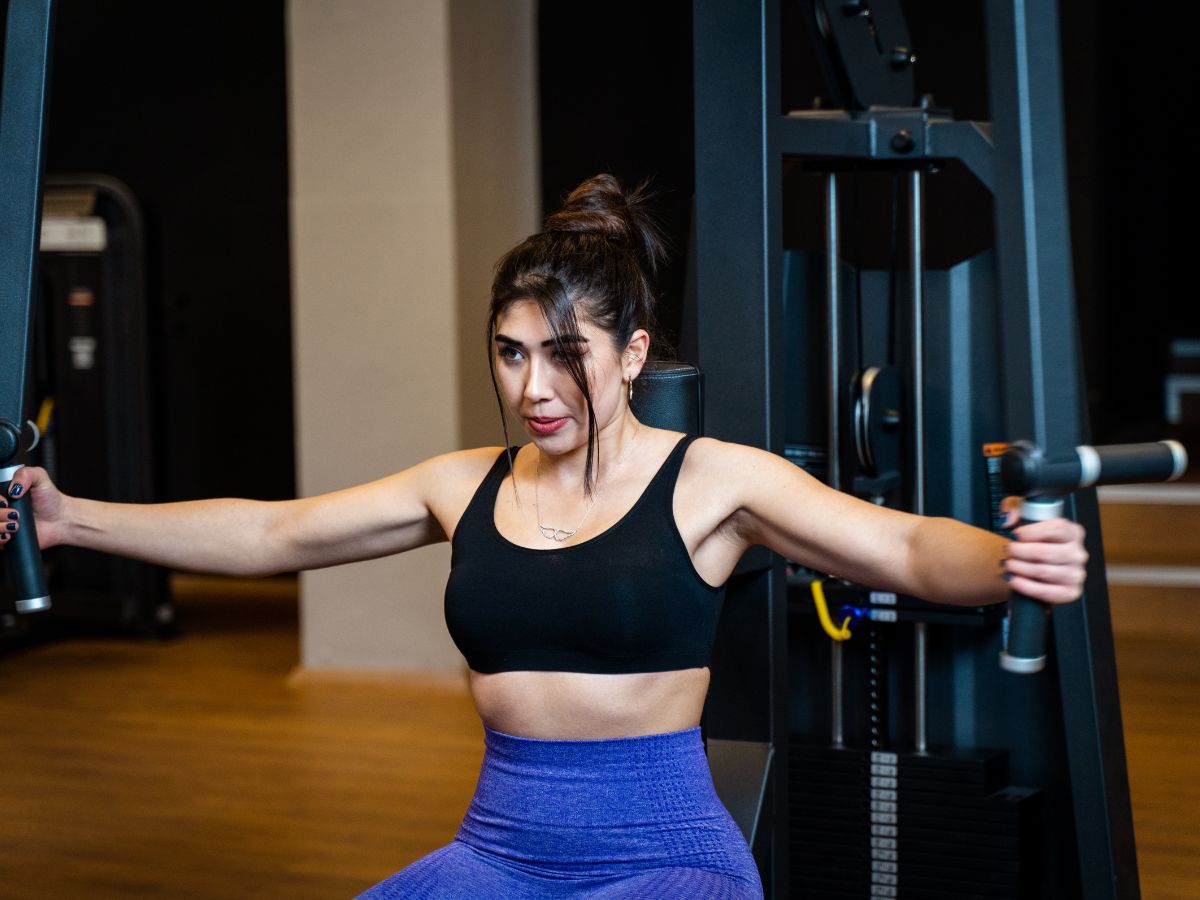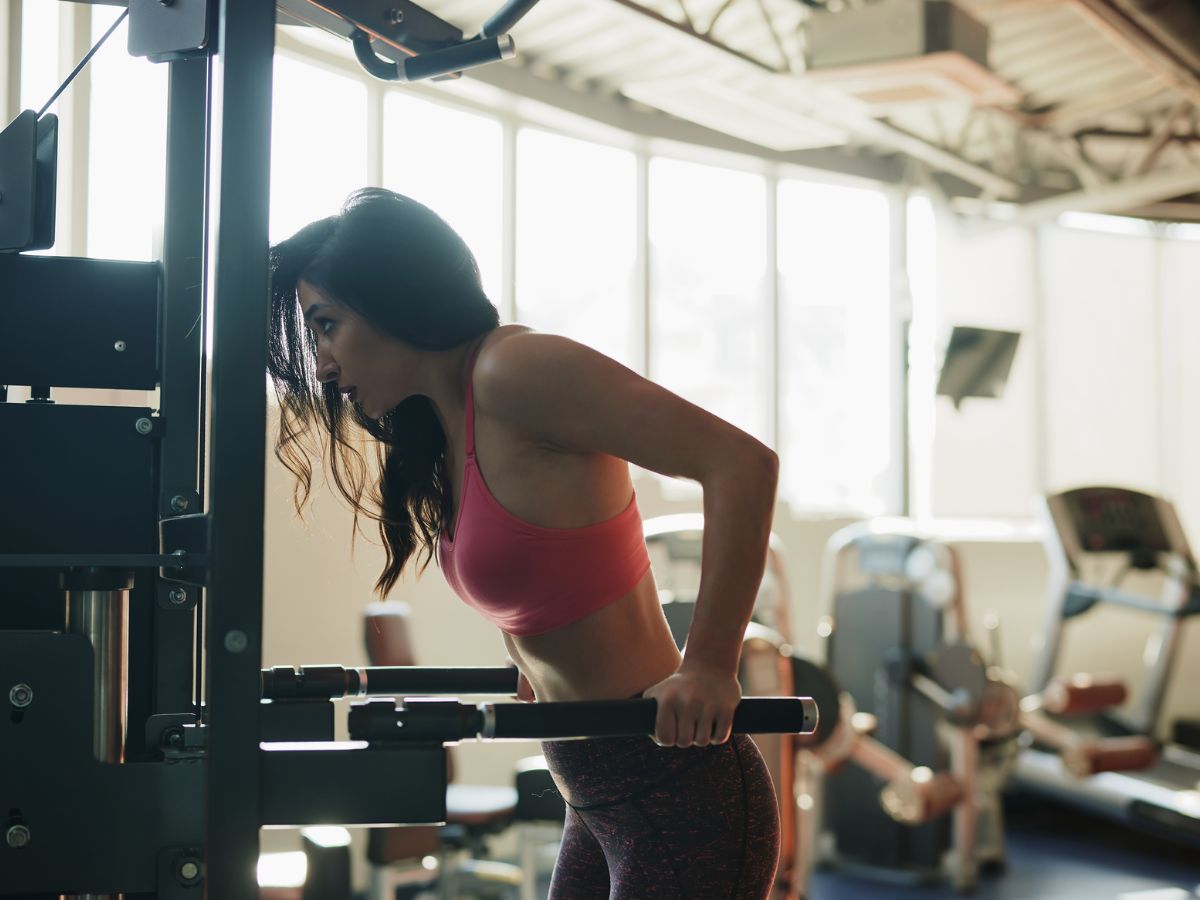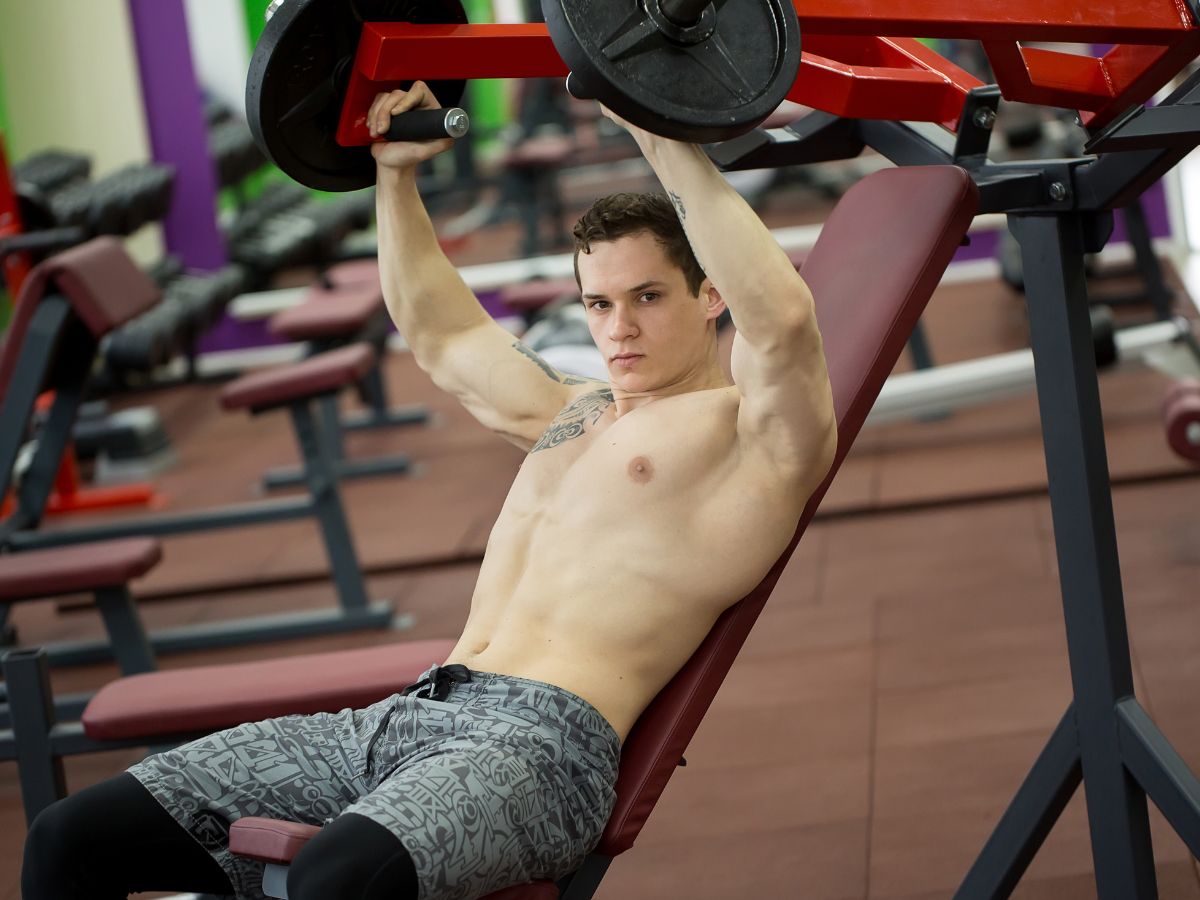Table of Contents
ToggleIntroduction:
About the chest expander muscles worked: Chest expander exercises are a phenomenal method for drawing in and reinforcing an assortment of muscle bunches in the chest area. Principally focusing on the chest, shoulders, and upper back, these activities are intended to develop further muscle tone and, generally speaking, chest area strength. At the point when you utilize a chest expander, you’re dealing with your pectoral muscles as well as drawing in your deltoids, latissimus dorsi, biceps, rear arm muscles, and, surprisingly, your center muscles. This makes the chest expander an adaptable and compelling instrument for creating muscle perseverance, upgrading adaptability, and further developing stance.”
What is a Chest Expander?
Chest expander muscles worked: Utilize the Lifesaver Chest Expander to add moderate variable weighted protection from your chest area fortifying projects. Increment the scope of movement and situating of flies, pulls, twists, and presses to reinforce and extend pectoral, deltoid, and arm muscles. A cutting-edge take on the exemplary instrument intended for the first “strongmen” and jocks, this chest area strength-preparing gadget offers consistent obstruction and the capacity to target explicit muscles for rehabbing chest area wounds and making expanded adaptability and portability. Integrate up to 90 lbs of pinnacle-weighted obstruction by adding or eliminating up to three cables utilizing Help’s licensed Moderate Opposition Framework.
What chest expander muscles worked
Important facts about “Chest Expander Muscles Worked” include:
Pectoral Muscles (Chest): The significant muscle bunch worked is the pectorals, explicitly the pectoralis major. This muscle is responsible for movements like pushing and crushing, which are necessary for the chest expander to work out.
Deltoids (Shoulders): The foremost (front) and average (side) deltoids are locked in during chest expander works. These muscles are significant for shoulder flexion and snatching.
Latissimus Dorsi (Upper Back): The lats are likewise connected, especially when the groups are pulled apart in developments that imitate a paddling activity.
Biceps and Rear arm muscles: Optional muscle bunches like the biceps and rear arm muscles are engaged with settling and supporting the developments, particularly while broadening and getting the arms.
Center Muscles: The center muscles, including the abs and lower back, are locked in to settle the body during the activities, generally improving equilibrium and stance.
Benefits of chest expander muscles
About the chest expander muscles worked benefits
Further develops Muscle Strength and Tone: Fundamentally focuses on the chest, shoulders, and upper back, upgrading muscle strength and tone.
Expands Shoulder Adaptability and Portability: Normal use can prompt better shoulder joint adaptability and scope of movement.
Improves Stance: Fortifies the upper back and shoulders, which can add to more readily act.
Flexible Exercises: Considers different activities, making it an adaptable device for full chest area molding.
Versatile and Advantageous: Simple to store and convey, making it ideal for home exercises or for remaining fit while voyaging.
Reasonable for All Levels: Customizable opposition levels make it suitable for fledglings to cutting-edge clients.
Low Effect on Joints: Gives opposition without overwhelming the joints, which is advantageous for those with joint worries or for more seasoned grown-ups.
3 Best Chest Exercises
Machine fly

The fly machine is ideal exercise hardware to develop chest fortitude and increment bulk. On the off chance that your primary objective in doing this is to construct your pecs, you’d accomplish the ideal outcomes effectively with this exercise.
The greatest aspect of the machine chest fly is that you don’t need to stress over Keeping up with Steadiness or equilibrium all through the activity. For a recently started dealing with his novice chest muscles, I would track down the activity to help him greatly through the everyday tasks.
How does a Machine fly?
Adjust the Machine: Prior to beginning, ensure the machine is acclimated to accommodate your body size. The seat level ought to be set so that when you sit, the handles are at chest level. The arm cushions ought to be situated so they are agreeable and lined up with your chest.
Select the Weight: Pick a weight that is testing yet permits you to play out the activity with a legitimate structure. It’s smarter to begin with a lighter weight and increment depending on the situation.
Beginning Position: Sit on the machine with your back level against the back cushion. Handle the handles or put your arms on the arm cushions. Your arms ought to be stretched out to the sides, following your chest, but not locked at the elbows.
Playing out the Activity:
- Gradually bring the handles or cushions together before you, zeroing in on crushing your chest muscles. Your arms ought to remain somewhat twisted all through the development.
- When the handles or cushions are before your chest, stop briefly and further crush your chest muscles.
- Gradually return to the beginning position, controlling the load as you move back.
Relaxing:
- Breathe in as you open your arms.
- Breathe out as you bring the handles or cushions together.
- Reiterations and Sets: Play out the ideal number of redundancies and sets, normally 8-12 reps for 3-4 sets for muscle development and strength.
Wellbeing Tips:
- Try not to utilize an excess of weight, which can strain your shoulders.
- Keep the development controlled; try not to jolt or swing the loads.
- Guarantee your shoulders are loose and not slouched up towards your ears.
Tips For Beginner
Adjust the Machine: Set the seat so the handles line up with your mid-chest.
Choose Light Weights: Begin with a sensible load to zero in on structure.
Proper Form: Sit with your back level against the cushion, chest up, and shoulders down. Keep a slight twist in your elbows all through the development.
Controlled Developments: Move handles without a hitch, staying away from jerky movements.
Breathing: Breathe in a while, opening your arms, and breathe out while uniting them.
Avoid Overextending: Don’t extend your arms excessively far back to forestall shoulder strain.
Mind-Muscle Connection: Focus on feeling your chest muscles work.
Listen to Your Body: Stop assuming you feel any aggravation or uneasiness.
Chest dip

The chest dip is an incredible activity to use to focus on the muscles of the chest. It will likewise, in a roundabout way, work the muscles of the rear arm muscles and shoulders too.
Chest dips successfully hit the lower locale of the pec, comparably to the downfall seat press. Nonetheless, it follows an upward squeezing development design, which gives a special improvement to the muscles of the chest.
It is ideal to dominate the bodyweight variety of this activity before adding weight by means of weighted vests, belts, or chains.
The dip can be proceeded as a feature of your chest exercises, push exercises, chest area exercises, or full body exercises.
How to do a Chest dip?
Find the Right Equipment: Utilize equal bars or a plunge station. A few rec centers likewise have helped plunge machines in the event that you still need to get ready to do bodyweight plunges.
Beginning Position: Grip the bars with your hands and propel yourself up to a beginning position where your arms are straight yet not locked at the elbows. Incline somewhat forward to connect with the chest more.
Lower Your Body:
- Gradually bring down your body by bowing your elbows until they are at around a 90-degree point.
- Ensure your elbows don’t erupt out something over the top; they ought to keep straight with your body.
- As you plunge, keep your middle inclined forward to underscore the chest muscles.
Push Up: Drive through your palms to push your body back up to the beginning position. Center around utilizing your chest and rear arm muscles to lift yourself.
Relaxing: Breathe in as you lower yourself down and breathe out as you push back up.
Reiterations: Do however many redundancies as you can deal with great structure. As a novice, you very well may be trying to do many things; however, you’ll work on them over the long run.
Tips For Beginner
- Start with Assisted Dips: On the off chance that you can’t do a bodyweight dip, begin with a helped plunge machine or use obstruction groups for Help.
- Maintain Control: Play out the development in a controlled way to boost muscle commitment and decrease the gamble of injury.
- Keep Your Shoulders Down: Try not to shrug your shoulders towards your ears.
- Depth of Dip: Just go as low as agreeable. Diving too deep can overwhelm your shoulders.
- Progress Gradually: As you get more grounded, increment the number of reiterations or attempt additional difficult varieties.
Machine bench press

The chest press is a famous machine practice you’ll frequently see at the exercise center. It emulates the seat press, with you driving weight away from your chest while situated. This objective is the enormous pectoral muscle in detachment.
Another extraordinary machine exercise to improve your chest exercise is the machine chest fly, where you press loads with your drawn-out arms, likewise confining your chest.
Since you don’t have to balance out the weight as you would with a level seat press (utilizing either hand weights or dumbbells), the rear arm muscles and front shoulder are less locked in.
How to do a Machine bench press?
Adjust the Machine: Set the seat level so that when you sit, the handles are level with the center of your chest. This arrangement is critical for focusing on the right muscle gathering and staying away from strain.
Select the Weight: Pick a weight that is testing yet permits you to play out the activity with a legitimate structure. In every case, it is better to begin lighter and increment the load depending on the situation.
Sit Appropriately: Sit on the machine with your back level against the backrest. Your feet ought to be level on the floor, shoulder-width separated, giving soundness.
Grip the Handles: Grip the handles with your hands only more extensive than shoulder-width separated. Your wrists ought to be straight, not bowed, to stay away from strain.
Perform the Press:
Drive the handles from your chest, broadening your arms. Do this in a controlled way without locking your elbows toward the finish of the development.
Stop momentarily at the highest point of the development.
Gradually return to the beginning position, controlling the load as you bring your arms back.
Relaxing:
- Breathe in as you bring down the weight, bringing the handles towards your chest.
- Breathe out as you press the load up.
Tips for beginner
Redundancies and Sets: Play out the activity for an ideal number of reiterations and sets. A typical methodology is 3-4 arrangements of 8-12 reps each, contingent upon your wellness objectives.
Keep Your Developments Controlled: Stay away from jerky or fast developments, which can prompt injury. The emphasis ought to be on smooth, controlled movements.
Maintain Proper Posture: keep your shoulders down and back, chest up, and try not to curve your back exorbitantly.
Listen to Your Body: Assuming you feel any aggravation or uneasiness, particularly in your shoulders or wrists, stop the activity. It could show an inaccurate structure or an excessive amount of weight.
Conclusion:
Chest expander muscles worked: utilizing a chest expander is a great method for working different muscle bunches in the chest area. It actually focuses on the chest, shoulders, and upper back, alongside optional muscle bunches like the biceps, rear arm muscles, and center. This flexible gear not only aids in reinforcing and conditioning these muscles but also helps with upgrading shoulder adaptability, further developing stance, and giving a low-influence exercise reasonable for all wellness levels. Whether you’re hoping to develop muscle fortitude, increment versatility, or basically change up your exercise routine daily schedule, a chest expander is a significant and useful instrument to accomplish these wellness objectives.”
FAQ:
What muscles do chest expanders reverse fly work?
All in all, which muscles do you focus on with the Converse fly? Muscles work incorporate your back delts (back shoulders) as well as your rhomboids, trapezius, and latissimus dorsi (otherwise known as your lats, which stretch down your back from your armpits to your spine) muscles.
What is a spring chest expander used for?
It is a clear piece of equipment containing two handles related to springs that give deterrents. Using the chest expander is once in a while called strand pulling. In spite of the way that you would expect the chest expander to zero in on the chest muscles, it can similarly be used to rehearse the legs and back.
Read More :